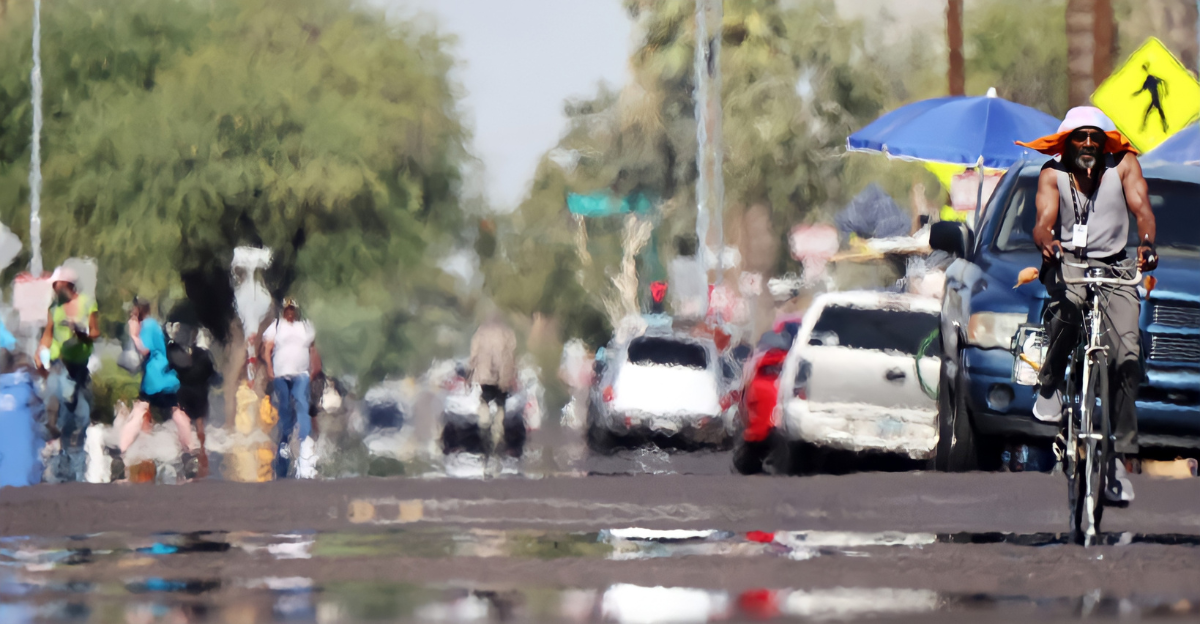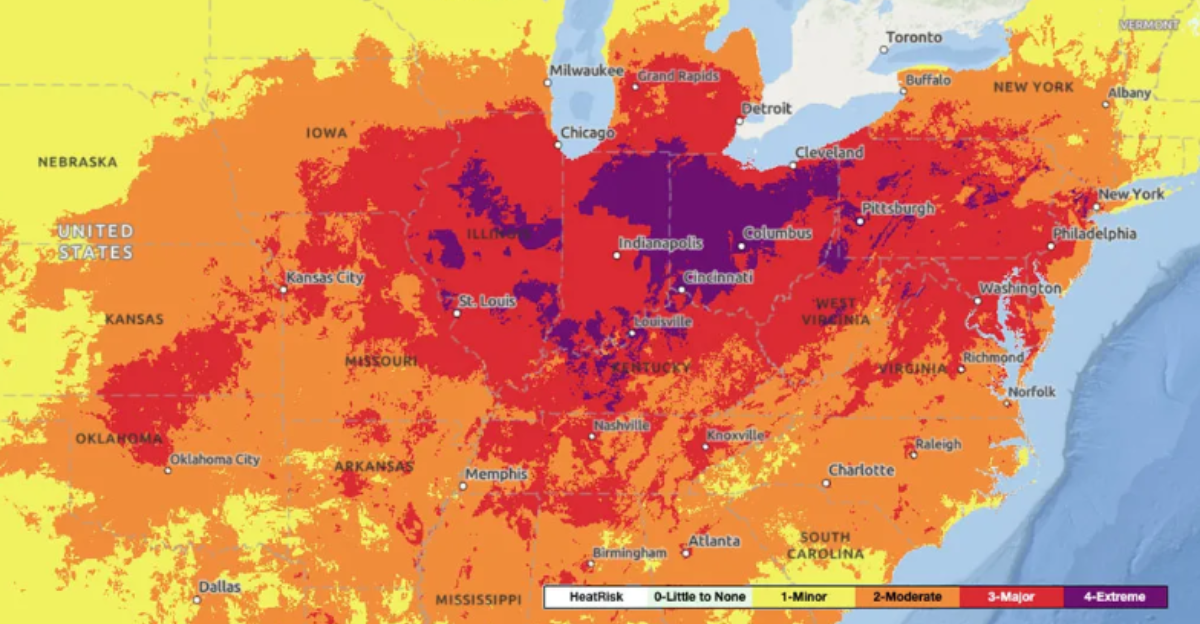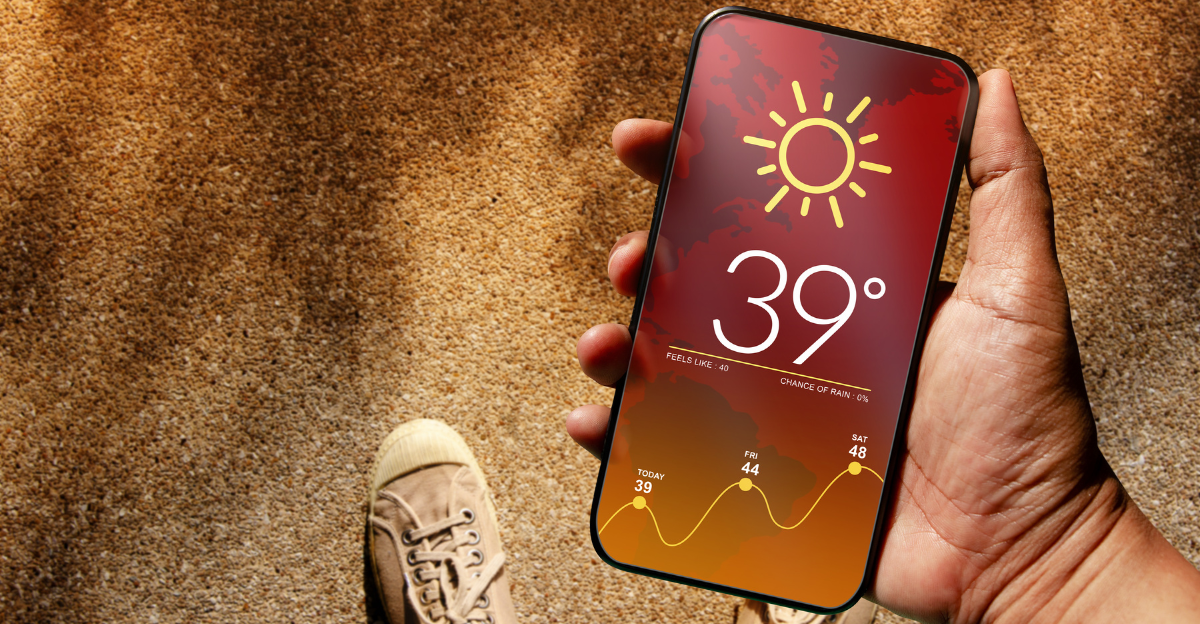
An intense and unprecedented heat dome is engulfing the central and eastern United States, causing widespread triple-digit temperatures breaking records not seen in over 100 years. This massive high-pressure system traps heat near the surface, leading to sustained and extreme warmth across a vast area. Hundreds of millions of Americans are affected, with over 147 million under various heat alerts spanning 28 states.
Major cities, including New York City, Philadelphia, Washington D.C., Chicago, and Boston, are experiencing dangerous heat levels. The heat wave is notable for its intensity and timing early in the summer, with temperatures soaring 15 to 20 degrees above seasonal averages. Authorities have issued numerous heat warnings and emergency declarations to protect vulnerable populations from the severe health risks posed by this extreme weather event.
Anatomy of the Heat Dome: What Is Driving This Extreme Weather?

A heat dome forms when a strong high-pressure system settles over a region, trapping hot air beneath it and preventing heat from escaping. This current heat dome is particularly intense and long-lasting compared to typical summer heat waves, leading to prolonged exposure to extreme temperatures. The dome acts like a lid, compressing and heating the air near the surface.
Atmospheric patterns, including stagnant air masses and high humidity, amplify the heat’s effects, making it feel even hotter. The combination of heat and humidity results in dangerous heat index values, sometimes exceeding 110 degrees, which increases the risk of heat-related illnesses. This event’s severity is linked to unusual atmospheric stability and moisture levels, intensifying the heat dome’s impact across the central and eastern U.S.
Geographic Reach – States and Cities Under Heat Alerts

The heat dome’s reach extends broadly across the Midwest, Northeast, Mid-Atlantic, and parts of the South. Over 147 million people in 28 states are under heat advisories, watches, or warnings. Major urban centers such as New York City, Philadelphia, Washington D.C., Chicago, Boston, and Minneapolis face extreme heat warnings.
The Interstate 95 corridor, stretching from Washington to New England, is particularly hard hit. States, including Indiana, Ohio, Michigan, Maryland, and New York, are under extreme heat warnings, with some areas expecting temperatures as high as 105°F. This widespread coverage underscores the scale of the event, affecting tens to hundreds of millions of residents and prompting emergency responses across multiple jurisdictions.
Record-Breaking Temperatures – Examples and Historical Context

This heat wave is smashing numerous temperature records, many of which have stood for over a century. Salt Lake City and Mitchell, South Dakota, each recorded highs of 104°F, with Mitchell surpassing its previous record of 101°F. Minneapolis broke records set in 1900 and 1910 by hitting 90°F and then 96°F.
New York City is approaching 100°F in June for the first time since 1966, an exceptionally rare early-season heat milestone. These record highs are significant not only for their extremity but also for occurring so early in the summer, signaling a shift in typical seasonal patterns. The persistence and breadth of these records highlight the unusual nature of this heat dome and its place in historical climate trends.
Health Risks and Public Safety Measures

The extreme heat poses serious health risks, particularly for vulnerable groups such as children, older people, and those with pre-existing medical conditions. The minimal overnight cooling exacerbates dangers, as sustained high temperatures prevent the body from recovering. Heat-related illnesses, including heat exhaustion and heat stroke, are rising sharply.
Public health officials have declared heat emergencies, opened cooling centers, and issued advisories urging hydration and limited outdoor activity. Schools in affected regions have adjusted schedules or closed early to protect students and staff. These measures aim to mitigate the heat dome’s immediate health impacts, but the event’s scale challenges emergency services and public health infrastructure.
Impact on Daily Life and Infrastructure

The heat wave is disrupting daily life and straining infrastructure. Many school districts have dismissed students early or switched to half-day schedules to reduce heat exposure. Power grids are under significant stress due to soaring demand for air conditioning, risking outages. Outdoor activities and work are curtailed, with sports events requiring medical treatments for heat-related issues.
Infrastructure problems, such as road buckling in Missouri, have been reported, illustrating the physical toll of extreme heat on public assets. The combination of health risks, power strain, and infrastructure damage underscores the broad societal impact of this heat dome beyond just uncomfortable temperatures.
Climate Change Connection: Is This the New Normal?

Scientists widely agree that human-driven climate change increases the frequency and intensity of heat waves like this. Rising greenhouse gas emissions have led to higher average temperatures and extreme weather events. Notably, nighttime temperatures are growing faster than daytime highs, reducing the natural cooling period and increasing health risks.
Climate models project that summers will become hotter and extreme heat events more common in the coming decades. This heat dome exemplifies these trends, a stark indicator of a warming climate’s tangible effects on daily life and public health.
Contrarian Perspectives and Unconventional Insights

While the link between climate change and heat waves is strong, some debates persist about attributing single events directly to climate change. Economic impacts are also emerging from an unconventional angle, with extreme heat affecting energy markets due to soaring electricity demand and reducing labor productivity, especially in outdoor industries.
Urban planning case studies show that cities with green infrastructure and heat resilience strategies can better withstand such events. These insights highlight the complexity of heat waves’ impacts and the multifaceted approaches needed for adaptation and mitigation.
Mitigation and Adaptation Strategies

Preparation is critical to managing future heat waves. Early warning systems and community preparedness plans can save lives. Urban heat island effects can be mitigated by increasing green spaces, planting trees, using reflective building materials, and designing buildings for better ventilation.
Policy efforts must focus on reducing greenhouse gas emissions to slow warming trends and enhancing public health infrastructure to respond effectively to extreme heat. These combined strategies are essential for reducing vulnerability and building resilience against increasingly frequent and severe heat events.
The Urgency of Addressing Extreme Heat

This unprecedented heat dome is a powerful reminder of the growing risks of extreme heat in a warming world. With tens to hundreds of millions affected and record-breaking temperatures shattering long-standing benchmarks, the event underscores the urgent need for informed public action and sustained climate mitigation efforts.
Protecting human health, infrastructure, and the environment requires coordinated responses and long-term strategies. As heat waves become more frequent and severe, addressing their causes and impacts is necessary and imperative for the future.
Explore more of our trending stories and hit Follow to keep them coming to your feed!

Don’t miss out on more stories like this! Hit the Follow button at the top of this article to stay updated with the latest news. Share your thoughts in the comments—we’d love to hear from you!







